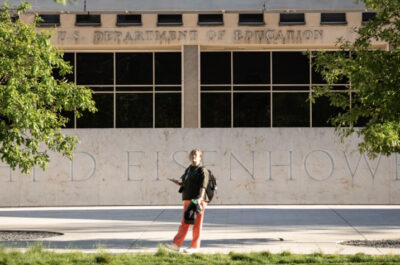
Planning a trip to Rome is all about preparation. The Eternal City is full of history, architecture, and culture. It’s more than a trip; it’s a journey through time.
When planning your Rome trip, think about many things. Choose the right season and learn about local customs. Each street and monument has its own story.
Rome is more than just tourist spots. It’s about ancient wonders, food, and art. It offers a unique travel experience that goes beyond the usual vacation.
To explore Rome well, do your homework and keep an open mind. Knowing about transportation, culture, and sightseeing will make your trip unforgettable.
In this guide, we’ll share key tips for exploring Rome. Get ready to discover Rome’s secrets and make memories that will last forever.
Essential Planning and Best Time to Visit Rome
Planning your Rome trip needs careful thought about the best travel seasons. The ideal time to visit Rome is between April and June or September and October. These months have mild weather and fewer tourists than the busy summer.
Summer (July and August) is hot and crowded. Temperatures often hit over 90°F, making it hard to explore. Prices for places to stay also go up a lot. If you want a better experience, consider visiting during the shoulder seasons.
Winter in Rome (November through February) offers a different vibe. It’s cooler and less crowded, perfect for those watching their budget. Many cultural spots stay open, and you’ll get to see the city like a local. Plus, Christmas and New Year’s add a special touch to your trip.
Booking flights and hotels early is key for a great Rome trip. Popular spots fill fast, especially during big events and holidays. Getting travel insurance can also help protect your plans and give you peace of mind.
Pro tip for Rome trip planning: Bring layers and comfy shoes. Rome’s streets are cobblestone, and the weather can change quickly. Also, look up local events and festivals to make your visit even more special.
Getting Around Rome: Transportation Guide
Exploring Rome’s transport system is an exciting journey. The city has many ways to see its sights. You can use the Rome metro, bus system, or other easy ways to get around.
The Rome metro has three main lines (A, B, and C). They connect key spots and areas. You can buy a single ticket or a daily pass for all transport.
The bus system covers more areas than the metro. It goes through the city center and to other parts. Look for digital signs at bus stops for when your bus will arrive.
There are also bikes and walking tours for different travel styles. Walking is great for the historic center’s narrow streets. Bike rentals offer a new view of Rome’s beauty.
Pro tip: Get a Roma Pass for free transport and discounts on attractions. It’s a smart way to save money while seeing Rome.
Where to Stay in Rome: Best Neighborhoods and Districts
Choosing the right Rome neighborhood is key to a great trip. The Historic Center is a top pick, close to famous spots like the Colosseum. You’ll find many places to stay, from fancy hotels to cozy B&Bs.
Trastevere offers a real taste of Rome. It’s on the Tiber River’s west bank, with its own charm. It’s great for those on a budget, with lots of hostels and guesthouses. The area is lively, with great food and fun nightlife.
Prati is perfect for peace near Vatican City. It’s elegant and quiet, with easy access to St. Peter’s. You’ll find luxury and mid-range hotels here, for comfort and convenience.
Monti is great for those on a tight budget. It’s trendy and artistic, with small, unique places to stay. You’ll love the vintage shops and cafes, making it a true Roman experience.
Think about what you need when picking your Rome stay. Look at how close it is to transport, attractions, and your budget. Each area gives a different view of Rome, so you’re sure to find your ideal spot.
Luggage Storage Roma Termini: Hassle-Free Sightseeing
Traveling to Rome is exciting, but carrying heavy bags can ruin the fun. Luggage storage at Roma Termini is the perfect fix. It lets you explore the city without the weight of your bags.
Left luggage Rome services are all over Roma Termini. They make it easy to store your bags securely. You can store luggage for hours or even days. This means you can see ancient streets, visit famous landmarks, and try Roman food without the hassle of heavy bags.
Expect top-notch service when you use luggage storage Roma Termini. Facilities have digital lockers and staffed rooms with security. Prices are fair, from €5 to €10 per bag, based on size and how long you store it.
Pro tip: Book your Rome baggage storage online before you go. This is especially smart during busy times. With many spots near Roma Termini, you can pick the best one for your trip.
Must-Visit Historical Attractions and Monuments
Rome is like a living museum of ancient history. It offers travelers a unique journey through time. The city’s attractions show centuries of human civilization, with famous monuments that fascinate millions every year.
The Colosseum is Rome’s most famous site. Built in 80 AD, it once hosted gladiatorial fights and public events. Visitors can see the underground chambers and picture the ancient Roman crowds.
Next to the Colosseum, the Roman Forum shows the heart of ancient Rome. It has ruins of government buildings and temples. It’s a glimpse into ancient Roman life.
Vatican City is home to incredible monuments. St. Peter’s Basilica is a stunning Renaissance building. The Vatican Museums have amazing art, like Michelangelo’s Sistine Chapel ceiling. These places are a dream for art and history fans.
Don’t miss the Pantheon and the Trevi Fountain. The Pantheon has an amazing dome, and the Trevi Fountain is beautiful. Arrive early to avoid crowds and get great photos.
Pro tip: Get a combined ticket for Rome attractions. It saves money and time as you explore this historic city.
Roman Cuisine and Dining Etiquette
Exploring Roman cuisine is a journey through centuries of tradition. Traditional Roman food gives visitors a real taste of Italy’s rich food history. The city is famous for dishes like carbonara, cacio e pepe, and supplì. These dishes show the simplicity and richness of Roman cooking.
When you start exploring Rome’s dining etiquette, you’ll learn important customs. Meals usually start late, with dinner around 8 PM. Italians enjoy their time, savoring many courses from antipasti to dolci. Tipping isn’t needed, as service charges are already on the bill.
Local restaurants in Rome focus on fresh, seasonal ingredients. Pasta is key in Roman cuisine, with recipes shared for generations. Try classic Roman pasta dishes in less touristy places to taste real local flavors.
Coffee in Rome is an art. Locals drink espresso at the bar, not sitting. Cappuccinos are for mornings – getting one after lunch might surprise locals. Street food like pizza al taglio and supplì offer quick, tasty options for travelers.
Knowing these dining tips helps tourists truly experience Roman culinary culture. It makes dining in Rome more meaningful and enjoyable.
Safety Tips and Common Tourist Scams
Visiting Rome can be amazing, but you must stay alert. Rome safety tips include being aware of your surroundings, especially in busy spots like the Colosseum and Vatican City. Pickpockets often target tourists, so keep your valuables safe. Use a cross-body bag that zips closed.
Tourist scams in Rome are common. Street vendors might sell fake designer goods or offer unwanted services. Be careful of people offering friendship bracelets or asking you to sign petitions. These are tricks to steal your stuff while you’re distracted.
When using ATMs, pick machines inside banks or in safe, well-lit spots. Always use official taxi services and avoid unmarked cabs. Check restaurant menus with prices before ordering to avoid surprise bills. Rome’s emergency services can be reached by dialing 112 for police, medical, and fire help.
Keep important documents like your passport in a safe place. Save your country’s embassy and local police station’s contact info. By being informed and careful, you can enjoy Rome’s beauty without worry.
Shopping in Rome: From Markets to Boutiques
Rome is a shopper’s paradise, with both luxury boutiques and traditional markets. The Rome shopping guide shows a wide range of places to shop. Via del Corso is a top spot, running from Piazza del Popolo to Piazza Venezia. It’s filled with international brands and local stores.
Fashion lovers will adore Via Condotti. It’s lined with high-end designer shops like Gucci, Prada, and Bulgari. For a real taste of local life, Rome’s markets are a must-see. Campo de’ Fiori market is lively, offering fresh produce, local crafts, and unique souvenirs.
Looking for souvenirs? Rome has plenty of options. Leather goods, ceramics, olive oil, and local wines are all great choices. Monti neighborhood has vintage shops and independent boutiques that show Rome’s creative side.
For those on a budget, Porta Portese market is a great place to find deals. Open on Sunday mornings, it’s full of vintage clothing, antiques, and unique items. Whether you’re after luxury brands or local crafts, Rome’s shopping scene is unforgettable.
Cultural Customs and Local Etiquette
Exploring Rome means learning about local customs and etiquette. Showing respect for Rome’s ways will make you feel welcome. Start conversations with a friendly “buongiorno” (good morning) or “buonasera” (good evening) in shops, restaurants, or when meeting people.
Dress codes are key in Rome, especially at religious sites. Wear modest clothes, covering shoulders and knees. Shorts or sleeveless tops are not suitable for historic churches and basilicas. Also, Italians prefer a bit more formality at meals than Americans do.
Learning basic Italian phrases shows respect for the culture. Saying “per favore” (please), “grazie” (thank you), and “scusi” (excuse me) can make a big difference. Locals are patient and will help you practice your Italian.
Meals in Rome are about enjoying time together. Take your time, and don’t rush. Tipping is not required, but a small tip for great service is nice. Knowing these customs will help you fit in and have a better trip.
Conclusion
Visiting Rome is a journey filled with history, culture, and delicious food. When planning your trip, learn about Rome’s unique pace and its timeless beauty. From the ancient Colosseum to lively neighborhoods, Rome offers a travel experience unlike any other.
Smart travelers do more than just book tickets. They learn about local customs, plan their transport, and use services like luggage storage at Roma Termini. These steps help you explore Rome confidently and fully enjoy its rich culture.
Remember, being flexible and curious is key to your Roman adventure. Enjoy authentic Italian food, explore historic streets, and find hidden architectural gems. Rome promises an unforgettable experience. Your careful planning will make your trip magical.
Begin planning your Roman journey now. Bring your sense of wonder, respect for traditions, and a hunger for discovery. Rome is ready to share its stories, flavors, and experiences that will stay with you forever.






